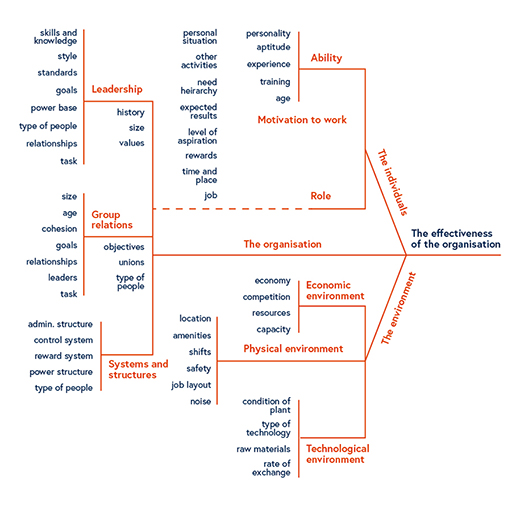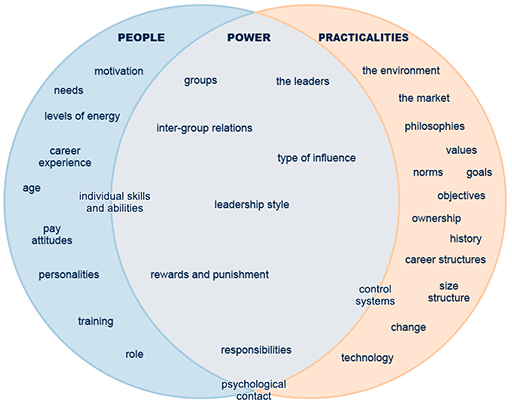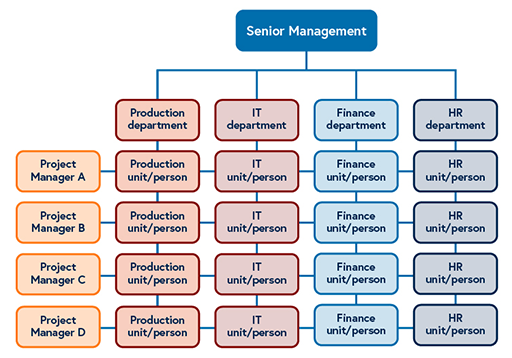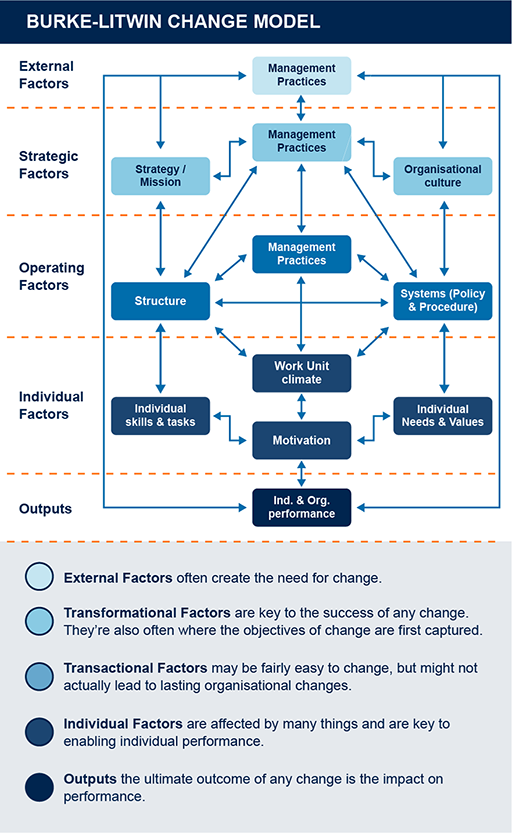5 Organisational structures
As organisations plan for how they will work in the future, most HEIs may have structures that were originally designed for primarily ‘on site’ working, with boundaries between units and functional roles clearly defined. As technology, the scope of roles – which may be more interdisciplinary – and hybrid working environments have evolved, there may need to be significant changes, which allow more flexibility and have a more collaborative and integrated approach to meet the needs of how we need to work now.
‘The structure of an organisation is the pattern of relationships between roles in an organisation and its different parts. The purpose of the structure serves to allocate work and responsibilities in order to direct activities and achieve the organisation’s goals. Structure enables managers to plan, direct, organise and control the activities of the organisation.’
Structures should reflect the organisation’s purpose and how it needs to work to enable effective and accountable decision making and policy making. While many organisations try to reduce ‘bureaucratic structures’, if appropriate parameters of ‘bureaucracy’ are understood and integrated effectively, they can provide clarity for employees on their roles, responsibilities and expectations of their organisation.
It can be useful to consider Charles Handy’s factors affecting organisational effectiveness, and the relationship between people power and practicalities, when reviewing your organisational needs and structure.
There are various structural approaches that can be adopted, which tend to be based on either a horizontal, vertical or matrix structure.
Horizontal structures aim to have fewer levels of management, with many employees having a wide span of control that allows for better communication, autonomy and responsibility. When these are effective, they naturally encourage collaboration.
Vertical structures, in contrast, tend to be more hierarchical, defining a clear chain of command that can lead to complicated approval processes.
Many organisations have now adopted a Matrix structure, that allows for pathways throughout the organisation that enable dual reporting and task delegation. These are more common in complex organisational environments that need to be adaptive to change. This approach can lead to better and more informed decision-making, as can reduce silos and achieve better communication across departments.
Various approaches can be taken for organisational structure design and may HEIs will have their preferred approach, which links to change models. The Burke-Litwin change model’s premise is ‘that change starts externally and transitions to the individual’ (Burke-Litwin,1992) which can be complex due the factors it suggests considering. It has an integrated approach that focuses on the interdependences that may lead to better collaboration and involvement, as it allows you to consider the needs of the organisation, team and individual.
As organisations better understand their business needs and the needs of their employees, and start to consider how best to utilise physical space in different ways to reflect fewer employees being based on site, and office space being used in more flexible ways, new structures may emerge.




